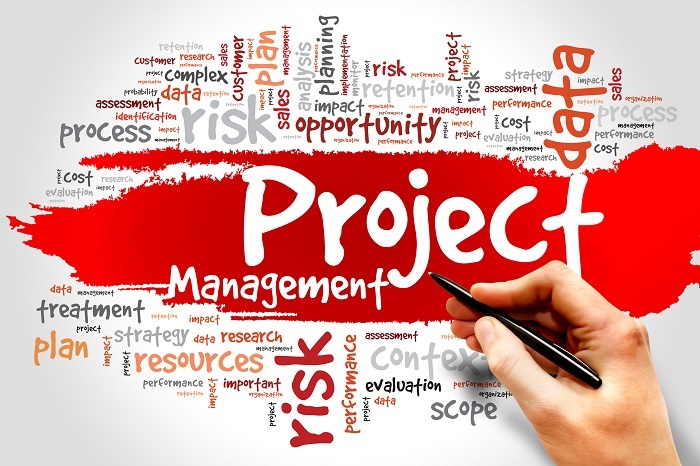
 Data Structure
Data Structure Networking
Networking RDBMS
RDBMS Operating System
Operating System Java
Java MS Excel
MS Excel iOS
iOS HTML
HTML CSS
CSS Android
Android Python
Python C Programming
C Programming C++
C++ C#
C# MongoDB
MongoDB MySQL
MySQL Javascript
Javascript PHP
PHP
- Selected Reading
- UPSC IAS Exams Notes
- Developer's Best Practices
- Questions and Answers
- Effective Resume Writing
- HR Interview Questions
- Computer Glossary
- Who is Who
What Are the Phases of the Project Management Process?
Project management is a methodical technique for planning and controlling projects to ensure their success. A project's success is determined by various elements, including clearly defined objectives, realistic planning, good communication, and efficient resource management.

In most cases, the project management process is organized into five stages: initiation, planning, execution, monitoring and control, and closure.
Each phase has its own set of deliverables and results that act as key indications of project progress. This article will give an overview of the project management process as well as emphasize the major deliverables and outcomes for each phase.
Overview of the Project Management Process
There are multiple steps in the project management process that all work together to guarantee a project's success. Let's understand in detail now.
Initiation ? The first phase in managing a project is called "initiation," and it entails defining what the project will be. The project's goals, scope, and purpose are established during this phase.
Planning ? In the planning phase, a strategy is formulated that specifies how the project's objectives will be attained. Tasks, due dates, cost estimates, and needed materials must all be determined.
Execution ? In this phase, the project strategy is put into action. Managing and coordinating those resources is what this entails.
Monitoring and Control ? In this stage, called "monitoring and control," you'll look over the project's stats to see if it's on track and make any necessary adjustments if it's not.
Closure ? In project management, this phase is known as "closure" and marks the end of the project's life cycle. At this point, the project is wrapped up and the outcomes are assessed to see if the goals were met.
Standardized project management processes increase on-time and under-budget project completion by 28%, according to research conducted by the Project Management Institute.
Phase 1: Initiation
The first phase of any project is the initiation phase. In this stage, the scope of the project is narrowed down and its goals are laid out. This step is critical because it establishes the basis for the rest of the project and ensures that everyone involved is aware of what they are getting themselves into.
Keep in mind that only 64% of projects, according to the Project Management Institute, actually succeed in achieving their intended outcomes.
This highlights the significance of taking the time during the initiation phase to properly define the project and set clear objectives, which can improve the likelihood of project success.
Phase 2: Planning
The second phase of project management is the planning phase. The team develops a comprehensive plan for the project at this stage, outlining all of the activities, deadlines, resources, and potential dangers. This plan serves as a guide for the undertaking and ensures that all parties are on the same page.
Wrike found that 77% of successful projects make use of project management software during the planning stage, so that's something to keep in mind. Because of this, it's clear that teams could benefit greatly from the use of technological tools to aid in project planning and management, allowing them to better collaborate and keep the project on track.
Phase 3: Execution
The third stage of the project management process is executed, which is when the plan is put into action. The project team works during this phase to complete the tasks and activities outlined in the project plan while monitoring progress and making necessary adjustments.
One important statistic to remember during this phase is that only 52.7% of projects are completed on time, on budget, and with the expected features and functionality, according to a Standish Group study. This emphasizes the significance of effective project execution, which can have a significant impact on the project's success.
To increase the chances of success, it is critical to closely monitor progress, communicate with stakeholders on a regular basis, and make necessary adjustments on time.
Phase 4: Monitoring and Control
Monitoring and control is an important steps in the project management process. The project manager and team monitor the project's progress and performance during this phase to ensure it is on track to meet the objectives set during the initiation phase.

One key statistic to remember during this phase is that, according to a PMI study, organizations waste an average of $97 million for every $1 billion invested due to poor project performance. This emphasizes the importance of project monitoring and control in order to avoid delays, budget overruns, and other issues that can lead to project failure.
The project manager may use a variety of tools and techniques to monitor and control the project during this phase, such as regular status meetings, progress reports, and performance metrics. By closely monitoring the project, the team will be able to quickly identify and address any issues that arise, keeping the project on track for completion.
Phase 5: Closing
The final step in the project management process is closing. The project is completed during this phase, and the final deliverables are handed over to the client or stakeholders. This phase is critical because it ensures that the project's objectives have been met and that all loose ends have been tied up.
One important statistic to remember during this phase is that only 29% of projects are considered successful, according to the Standish Group. This highlights the significance of the closing phase, as it allows for a thorough evaluation of the project's success and allows for lessons learned to be documented and applied to future projects. Closing a project properly can increase the likelihood of future project success.
Key Deliverables and Outcomes for Each Phase
Specific key deliverables and outcomes are expected at each stage of the project management process. These deliverables and outcomes serve as important milestones and indicators of project progress.
The following are some examples of key deliverables and outcomes for each phase of the project management process ?
Initiation phase ? project charter, stakeholder analysis, and project scope statement.
Planning phase ? The project schedule, risk management plan, and project budget are all part of the planning phase.
Execution phase ? completed project deliverables, progress reports, and issue logs
Phase of monitoring and control ? performance reports, change requests, and quality control measures
Closing phase ? final project report, lessons learned document, and project evaluation metrics
Project managers can ensure that the project stays on track by focusing on these key deliverables and outcomes.
Tools and Techniques for Successful Project Management at each Phase
Here are some tools and techniques that are commonly used during each phase of the project management process ?
Initiation Phase ? In this phase, tools such as a project charter or feasibility study are used to define the project's scope, objectives, and stakeholders. Techniques such as SWOT analysis and stakeholder analysis can aid in the identification of potential risks and opportunities.
Planning Phase ? Project tasks and timelines are planned using tools such as a project schedule and work breakdown structure. Critical path analysis and risk management techniques can help ensure that the project is completed on time and within budget.
Execution Phase ? Project management software and communication tools are used to manage project tasks and keep all team members informed during the execution phase. Techniques such as project status meetings and performance reporting can aid in tracking progress and identifying any issues that must be addressed.
Monitoring and Control Phase ? To track project progress against the plan, tools such as project dashboards and variance analysis are used. Change management and quality control techniques can help ensure that the project stays on track and meets its objectives.
Closure Phase ? To close out the project and identify areas for improvement, tools such as a final project report and lessons learned document are used. Project debriefings and stakeholder feedback are two techniques that can help ensure that the project is completed successfully and that all stakeholders are satisfied.

